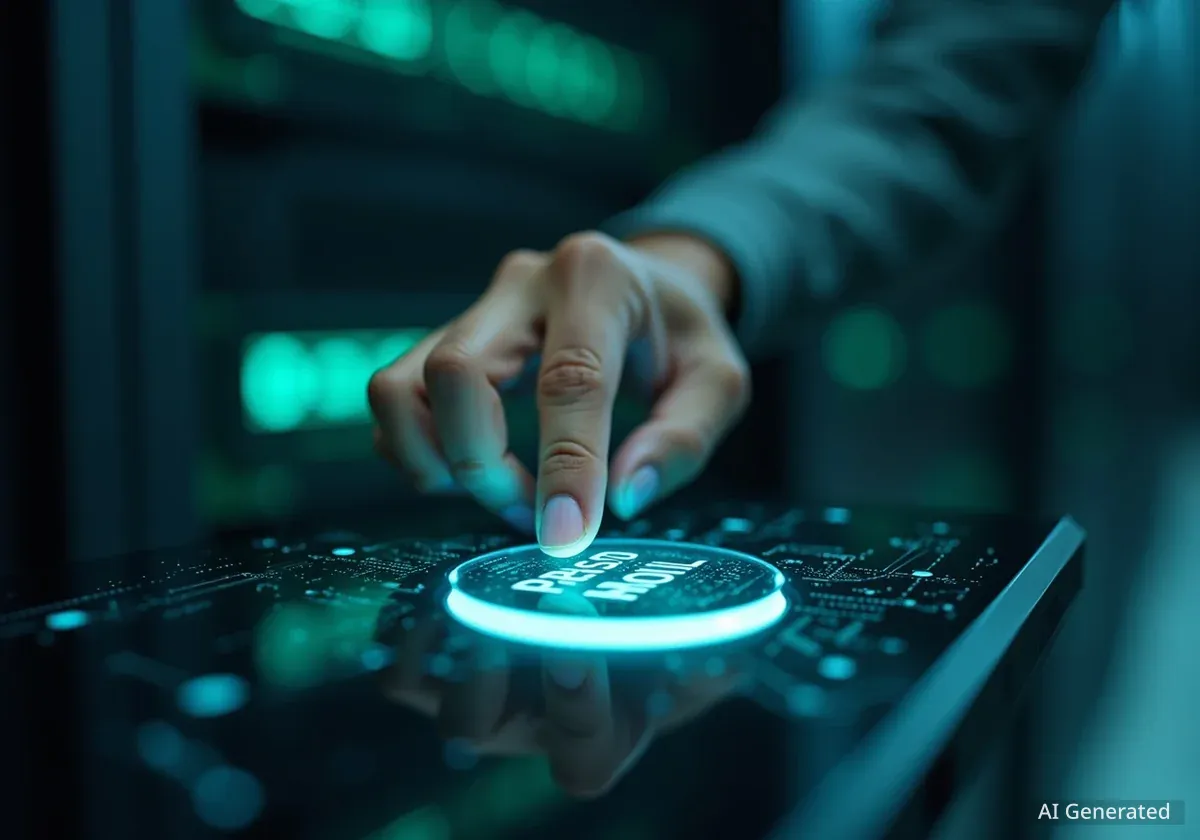Web users are increasingly encountering a new type of security check online: the 'Press & Hold' button. This method, designed to distinguish humans from automated bots, is quietly replacing the familiar 'I'm not a robot' checkbox and image puzzles that have dominated the internet for years. Security firms are rolling out these advanced measures to combat a new generation of sophisticated bots that can easily bypass older systems.
This shift reflects a significant escalation in the ongoing battle between website operators and malicious automated programs. As bots become more advanced, capable of mimicking human behavior with startling accuracy, the technology designed to stop them must also evolve, leading to a fundamental change in how we prove our humanity online.
Key Takeaways
- Websites are moving away from traditional CAPTCHAs like image puzzles towards behavioral checks like 'Press & Hold' buttons.
- This change is driven by the increasing sophistication of AI-powered bots that can now solve older types of security tests.
- New systems analyze subtle user behaviors, such as mouse movements and pressure duration, to verify human identity.
- The goal is to improve both security and user experience by reducing the friction of traditional, often frustrating, CAPTCHA challenges.
A New Front in the War on Bots
For years, the internet's gatekeepers relied on CAPTCHA, an acronym for 'Completely Automated Public Turing test to tell Computers and Humans Apart.' These tests presented challenges, like deciphering distorted text or identifying objects in a grid of images, that were once considered easy for humans but difficult for machines.
However, recent advancements in artificial intelligence and machine learning have turned the tables. Modern bots can now solve these puzzles with incredible speed and accuracy, often faster than the average person. This has rendered many traditional CAPTCHA systems obsolete, forcing security companies to innovate.
The result is a move towards behavioral biometrics. Instead of asking you to solve a puzzle, new systems analyze how you interact with the page. They track mouse movements, typing rhythm, screen touches, and even the pressure and duration of a click or a 'press and hold' action.
How 'Press & Hold' Works
When a user is prompted to press and hold a button, the security system is not just waiting for the action to be completed. It is collecting a rich set of data points in real-time.
Behind the Button
A typical 'Press & Hold' verification analyzes dozens of subtle data points in milliseconds, including the trajectory of the cursor approaching the button, the slight variations in pressure applied, and the micro-movements made while holding, to build a unique human signature.
These systems operate on the premise that humans are inherently unpredictable and imperfect. Our mouse movements are never perfectly straight, our clicks are not timed with machine-like precision, and the way we interact with a screen is full of subtle, organic variations.
Bots, on the other hand, often betray their automated nature through their perfection. Their movements can be too linear, their timings too consistent, and their interactions too clean. By analyzing these behavioral patterns, security platforms can make a highly accurate determination of whether the user is a human or a bot.
The Balance Between Security and User Experience
One of the primary drivers behind this evolution is the user experience. Traditional CAPTCHAs are often a point of major frustration for users. Squinting to read distorted text or endlessly clicking on pictures of traffic lights can be an annoying interruption, sometimes leading users to abandon a website altogether.
"The ideal security check is one the user doesn't even notice," explained a web security analyst. "The industry is moving towards invisible, passive verification that works in the background. Active challenges like 'Press & Hold' are a middle ground—more seamless than image puzzles but still an explicit step for the user."
The new generation of behavioral checks aims to be less disruptive. A simple 'Press & Hold' action is often faster and cognitively less demanding than a complex image recognition task. For the majority of legitimate users, the verification happens in a second or two, allowing them to proceed without significant delay.
Why Bots Are a Problem
Malicious bots are responsible for a wide range of harmful online activities, including:
- Scalping: Buying up limited-stock items like concert tickets or sneakers to resell at a markup.
- Credential Stuffing: Using stolen usernames and passwords to attempt fraudulent logins on other sites.
- Spam: Creating fake accounts to post spam comments or send phishing messages.
- Denial of Service (DoS): Overwhelming a website with traffic to make it unavailable for legitimate users.
The Future of Online Verification
The 'Press & Hold' button is just one example of the future of proving you're human online. The field of behavioral biometrics is rapidly expanding, and security systems are becoming more integrated into the fabric of a website.
In the near future, dedicated security checks may become rare. Instead, verification will happen passively and continuously from the moment you land on a page. The system will analyze how you scroll, how you move your cursor, and how you type into forms, constantly building a confidence score about your humanity.
Only when the system's confidence drops below a certain threshold—perhaps due to unusual or bot-like behavior—will an active challenge like a 'Press & Hold' button appear. This adaptive approach promises to deliver robust security against automated threats while creating a smoother, less intrusive experience for the vast majority of human users. The era of matching images is ending, and the era of analyzing behavior has begun.





